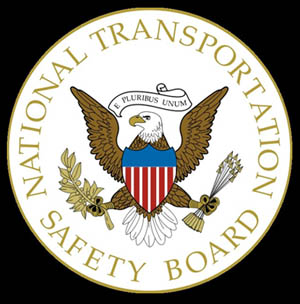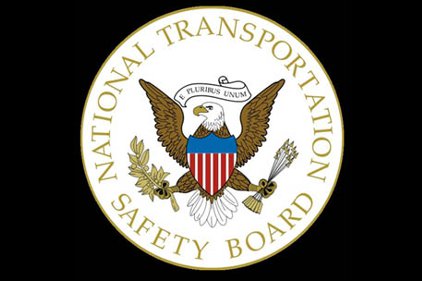 The driver of a vehicle hired to escort a truck carrying an oversize load was talking on her mobile phone at the time the truck struck an interstate highway bridge and caused it to collapse, sending two cars and a camper-trailer into a river.
The driver of a vehicle hired to escort a truck carrying an oversize load was talking on her mobile phone at the time the truck struck an interstate highway bridge and caused it to collapse, sending two cars and a camper-trailer into a river.
That was just one of the causes cited by the National Transportation Safety Board (NTSB) in its investigation into the May 23, 2013 accident at the Skagit River near Mt. Vernon, Wash. All of the eight vehicle occupations were safely rescued from the river; none had serious injuries.
A series of deficiencies
The NTSB cited “a series of deficiencies in a system intended to safeguard the passage of oversized loads over Washington State’s roadways” in its report.
The heavy truck, operated by the Canadian firm of Mullen Trucking LP, was traveling southbound on Interstate 5 when the oversize load it was carrying struck the top of a bridge spanning the Skagit River near Mt. Vernon, Wash. Seconds later, the damage caused a span of the bridge to collapse.
The deficiencies cited by the NTSB included the failure of the driver of the pilot/escort vehicle to perform basic safety functions, inadequate route planning by the trucking company, Washington State’s inadequate permitting process, and the lack of low-clearance warning signs for the bridge.
Mullen Trucking LP had hired another company, G&T Crawlers, to operate a pilot/escort vehicle as required by state law for the trip from the Canadian border to the truck’s destination, the port of Vancouver, Wash. The truck followed the pilot/escort vehicle, which was equipped with a height pole intended to verify clearance from obstructions for the oversize load.
Five cell phone calls in 30 minutes
In the 30 minutes leading up to the accident, the driver of the pilot vehicle had used a hands-free mobile phone to engage in five calls, including the one that she was on when the truck struck the bridge. An off-duty commercial truck driver traveling near the pilot vehicle said he saw the height pole strike four or five bridge elements.
The pilot vehicle driver said that she did not observe the height pole contact the bridge structure as she was passing under it. NTSB investigators were unable to conclusively determine if the pole contacted any part of the bridge structure, but did conclude that the driver’s use of the cell phone distracted her and “diminished her ability to recognize whether the height pole struck the bridge.”
“Eliminating distraction in transportation is a top priority for the NTSB,” said Acting Chairman Christopher Hart. “As we can see from this accident, any element that reduces a driver’s attention can have harmful results. Drivers must always focus on the task at hand and be aware of their surroundings.”
Trucking company failed to plan for clearances
Although the trucking company had obtained a permit for the trip, it failed to check and plan accordingly for the low clearances encountered along the route. As the truck approached the bridge, it was travelling in the right lane where the clearance was lowest due to the arc design of the support brace. Investigators said that had the truck been in the left lane, where the vertical clearance was greater, the oversize load would have cleared the bridge.
The NTSB called for changes in the permitting process used by Washington State Department of Transportation to authorize movements of oversize loads on its roadways. The current system allows trucking companies to enter data about a trip into an Internet-based application and obtain a permit without any review or evaluation of the proposed oversize movement activities. The NTSB said that the protection of bridge infrastructure was “too vital of a state concern to leave the responsibility for assessing the risk associated with the transportation of oversize loads entirely with the motor carrier.”
No warning signs
The NTSB also said that the lack of warning signage was a concern since WSDOT did not have any low-clearance signage by the interstate highway bridge to warn drivers of the height restrictions. Washington State has 22 bridges on its interstate system with a similar design as the Skagit River Bridge, and none have low-clearance signs or give any indications of the lane oversize vehicles should use.
Since the bridge collapse, WSDOT has updated the Skagit River Bridge by replacing the support brace’s arc design with a horizontal design that provides a uniform vertical clearance of 18 feet across the width of the bridge. WSDOT is also developing bridge clearance data and interactive maps to improve their permit process.
A preventable accident
“This costly accident was the result of a series of mistakes that could have been avoided,” said Hart, “The recommendations issued by the NTSB highlight the importance of driver awareness and the states’ responsibilities to provide adequate resources about low clearances.”
As a result of the investigation, NTSB issued 18 safety recommendations to the Federal Highway Administration; the 50 states, the District of Columbia and the Commonwealth of Puerto Rico; the Washington State Department of Transportation; the American Association of State Highway and Transportation Officials; the American Association of Motor Vehicle Administrators; the Governors Highway Safety Association; the Commercial Vehicle Safety Alliance; the Specialized Carriers & Rigging Association; Rand McNally, Nokia HERE, and Google Inc.
A synopsis of the NTSB report, including probable cause, findings, and a complete list of the safety recommendations, is available at http://go.usa.gov/Xugm.





